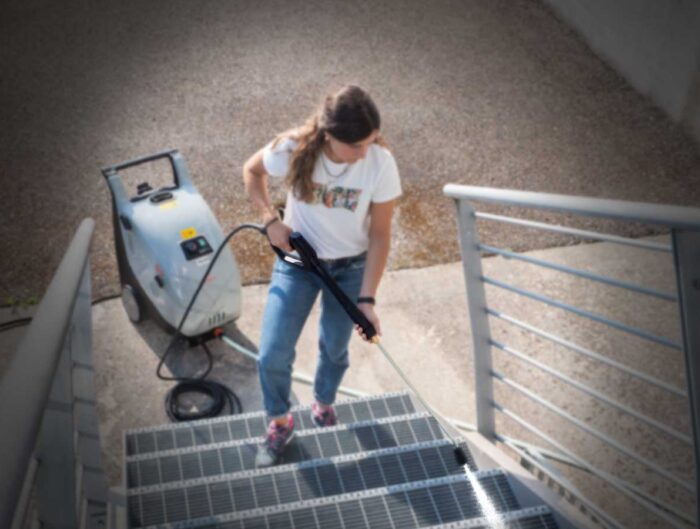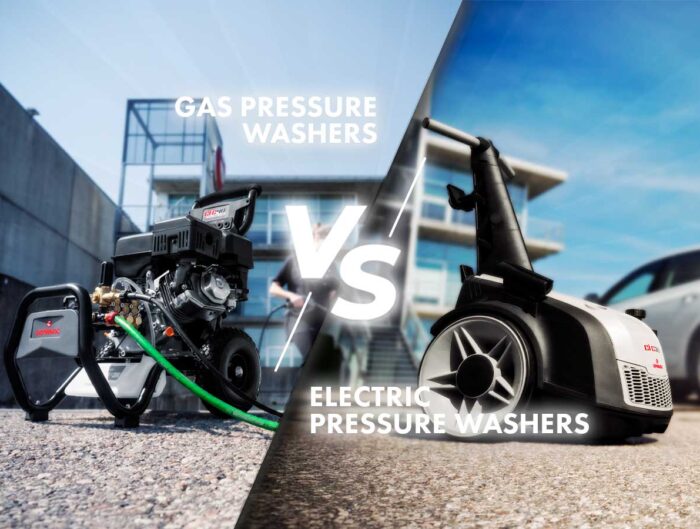Regular cleaning of solar panels is essential to ensure your system operates at peak efficiency. Although they are designed to withstand weather conditions, the accumulation of dust, dirt, and debris can significantly reduce their energy output. With proper maintenance, you can optimise performance and extend the lifespan of your installation. This guide presents effective methods, recommended tools, and key instructions for safe and accurate cleaning.
Table of contents:
- Why it’s important to clean solar panels
- How to know when your panels need cleaning
- Best methods for cleaning solar panels
- Cleaning solar panels with a pressure washer
- How to prevent damage during cleaning
- When you should call a professional
- Final maintenance tips
- Frequently asked questions
Why it’s important to clean solar panels
It is important to clean solar panels because a dirty surface reduces the amount of sunlight absorbed and lowers energy production. International studies show that dirt can lead to efficiency losses ranging from five to twenty-five percent, with even higher values in areas exposed to fine dust or pollution. Regular cleaning helps maintain consistent system performance and prevents long-term drops in output.
Impact on energy performance
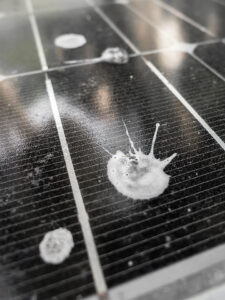
When the surface of a panel becomes covered with dust, pollen, leaves or bird droppings, sunlight encounters a barrier that reduces its absorption. This phenomenon is known as soiling and refers to the gradual accumulation of dirt on the glass surface, limiting the amount of light that reaches the photovoltaic cells. Even a few millimetres of buildup can compromise overall productivity.
The study Photovoltaic Soiling Loss in Europe: Geographical Distribution and Cleaning Recommendations shows that in Europe, soiling can cause average annual losses of 0.9%, rising to 5.3% when rain is not sufficient to effectively remove dirt, with peaks exceeding 10% in parts of Southern Europe. In industrial or commercial installations where energy production is calculated with precision, lack of proper cleaning can result in significant economic losses.
Cleaning frequency
The frequency with which solar panels should be cleaned depends on several environmental factors. In areas with regular rainfall, one cleaning per year may be sufficient. In locations exposed to sand, industrial dust or bird activity, it is advisable to clean them more frequently, even two or three times a year. Monitoring the system’s performance over time helps identify any drops in output caused by dirt buildup.
How to know if your solar panels need cleaning
It can be difficult to tell whether reduced energy output is caused by dirt or by a technical problem. Recognising the most common signs can help you identify when your solar panels require cleaning.
Indicators of dirt and damage
Among the most common signs that indicate your solar panels need cleaning are a noticeable drop in energy production compared to previous periods, the appearance of streaks or persistent marks, and visible dust buildup along the edges or lower sections of the panels. Other warning signs include the accumulation of leaves, bird droppings or residues from nearby industrial activity. If you notice cracks or any form of damage, it is essential to contact a professional immediately.
Environmental conditions that increase dust accumulation
Environmental and climatic conditions greatly influence how often solar panels need to be cleaned. Coastal areas, agricultural zones with frequent field operations, industrial sites, logistics hubs and urban environments with heavy traffic are particularly prone to residue buildup. Roofs located beneath large trees may also require more frequent cleaning due to falling debris.
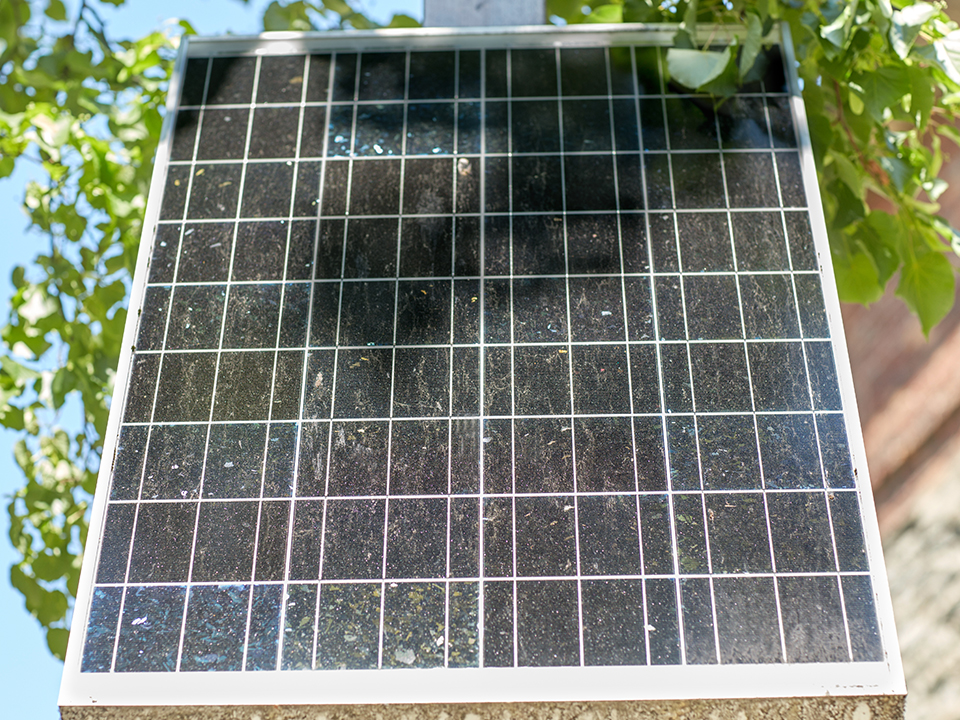
Best methods for cleaning solar panels
Choosing the right method for cleaning solar panels depends on the type of installation and how much dirt has built up. To protect the system and maintain long-term efficiency, it is essential to use gentle cleaning techniques that do not damage the glass surface or the panel seals.
Manual cleaning with the right tools
Manually cleaning solar panels is the most common method for residential systems and many commercial installations. This approach should only be used when the panels are safely accessible, ensuring the operator can work from stable positions with proper equipment. Safety is essential to avoid unnecessary risks.
For effective and gentle cleaning of solar panels, it is recommended to use soft brushes with anti-scratch bristles, telescopic poles and microfiber cloths. These tools help remove dirt and deposits without damaging the panel surface. Harsh or unsuitable detergents should be avoided. Using plenty of water reduces friction and helps protect the glass during the cleaning process.
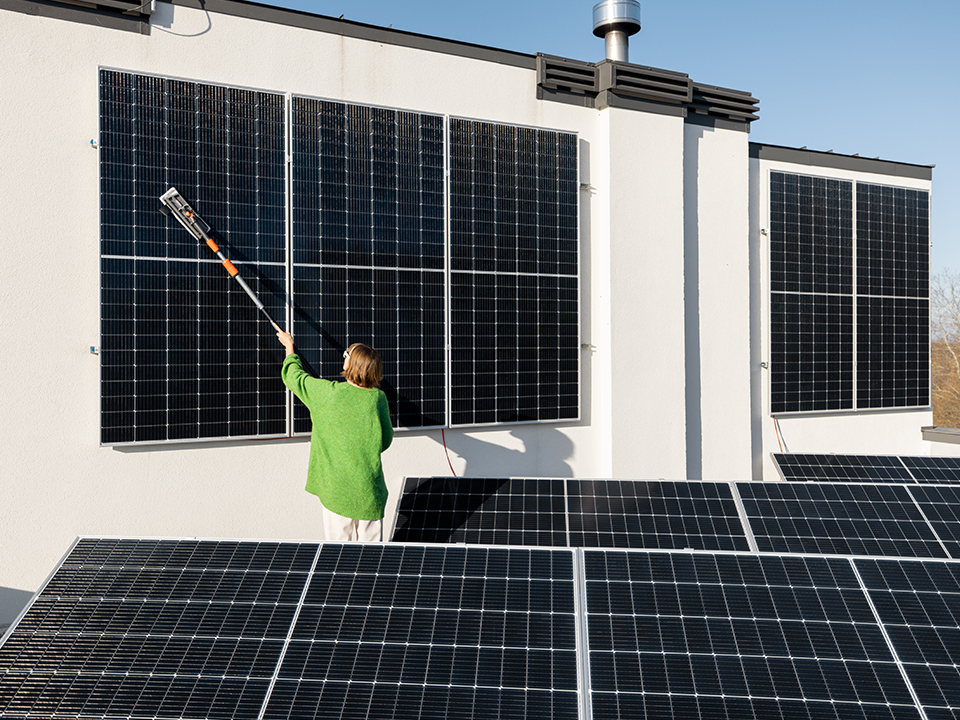
Using rainwater or deionized water
When considering how to clean solar panels correctly, deionized water is one of the most effective options because it prevents streaks and limescale residues that may appear after drying. Rainwater is also an excellent choice: sustainable, mineral-free and ideal for achieving a uniform clean surface without leaving marks.
Cleaning solar panels with a pressure washer
Cleaning solar panels with a pressure washer can be effective, but only under specific conditions. It is important to distinguish between residential systems and professional or industrial installations, as requirements and safety precautions differ significantly. In general, using a pressure washer can be useful when dealing with stubborn dirt or when cleaning large surfaces, since it helps remove compact deposits such as encrusted dust, organic residues or buildup along the edges. However, it must always be used with great care to avoid damaging the modules.
To achieve a safe and effective result, it is essential to work with low to moderate pressure settings, use a fan nozzle, and maintain an adequate distance between the spray and the surface. This ensures that the water is distributed evenly without applying excessive force on the glass or the frame, reducing the risk of microcracks, water infiltration or damage to the seals.
For this type of task, Comac offers reliable models such as the CI C10 and CI C15, two cold-water pressure washers designed for professional use, versatile and equipped with adjustable pressure for safe and controlled cleaning.
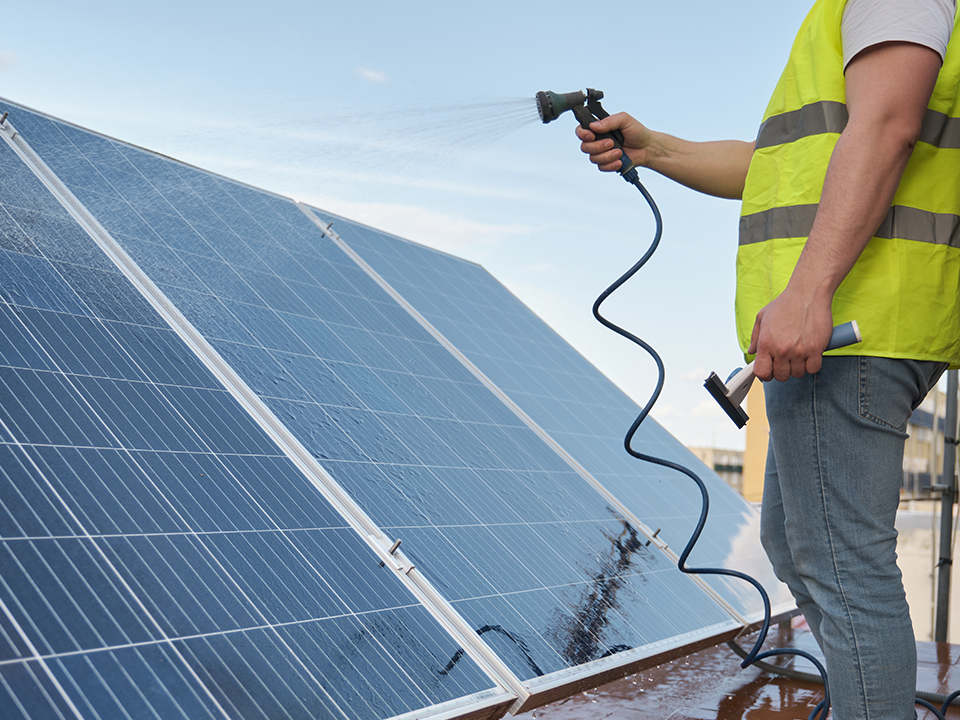
CI C10
The CI C10 is a compact and easy-to-handle cold-water pressure washer, designed to deliver professional performance thanks to its quiet and reliable induction motor. It can also be used for cleaning solar panels when the operator can work safely and maintain proper control of both distance and pressure, allowing stubborn dirt to be removed effectively while protecting the surface.

CI C15
The CI C15 is a powerful yet compact cold-water pressure washer, developed for demanding users who require high performance from a machine that remains easy to manoeuvre. Its vertical design, rubber wheels and ergonomic handle make transport and frequent use simple and comfortable. It can also be used for cleaning solar panels when full safety conditions are met, allowing precise adjustment of distance and pressure for effective cleaning that fully respects the surfaces.

How to prevent damage during cleaning
Cleaning solar panels requires careful attention not only to achieve a good result but also to preserve the integrity of the system. If performed without the proper precautions, the cleaning process can damage the glass, the cells or the seals, gradually reducing the overall efficiency of the installation.
Do not walk on the panels
Walking on solar panels can cause micro-cracks in the glass or damage the internal cells. These issues are often not immediately visible but can significantly reduce energy production over time. For this reason, it is essential to work from stable surfaces and avoid any direct pressure on the modules. In more complex situations, such as pitched roofs or industrial installations, it is advisable to use walkways or rely on trained personnel equipped with proper safety gear.
Avoid high temperatures
Cleaning the panels when they are very hot increases the risk of thermal shock, which can damage the glass or leave permanent streaks on the surface. The rapid evaporation of water, typical during the hottest hours of the day, can also reduce the effectiveness of the cleaning process. To minimise these risks, it is advisable to clean the panels early in the morning or in the evening, when the surface is cooler and the work can be carried out more safely and accurately.
When should you call a professional to clean solar panels?
There are specific situations where cleaning solar panels should be handled by a professional to ensure both safety and effectiveness. If the panels are installed on sloped roofs, at height, or in hard-to-reach areas, a DIY intervention can be risky and difficult to manage. Likewise, if there is stubborn dirt such as industrial residues, dried bird droppings, or compact deposits, professional-grade equipment and expertise are required to avoid damaging the glass or seals.
It is also advisable to contact qualified technicians when there are unexplained drops in energy production, persistent stains, or visible signs of damage. A professional can thoroughly inspect the system, use appropriate tools, and ensure a safe, precise, and manufacturer-compliant cleaning.
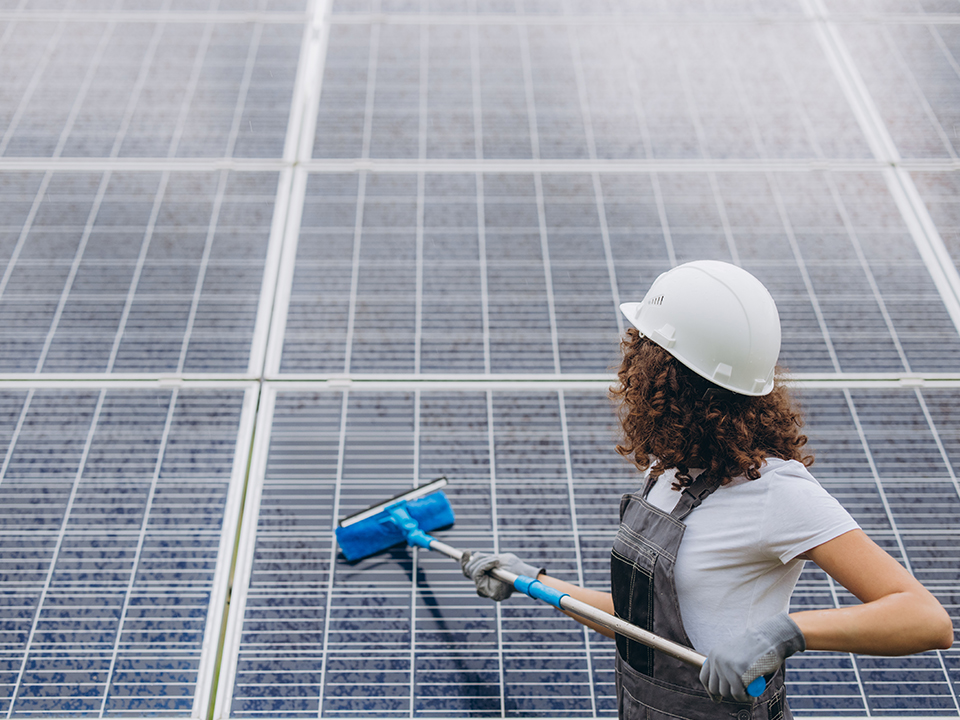
Final maintenance tips
Scheduled maintenance of solar panels helps keep energy output consistent over time. Regularly checking energy production, cleaning the panels, and monitoring the condition of their surfaces all contribute to extending the lifespan of the system. Keeping a record of each maintenance activity also makes it easier to track performance and identify any significant variations.
Frequently asked questions: how to clean solar panels
To clean solar panels yourself, make sure they are easy to reach and that the work can be done safely. Use plenty of water, soft brushes, telescopic poles, and microfiber cloths, avoiding harsh or unsuitable detergents. A pressure washer can be used only when you can precisely control both distance and water pressure. If the panels are on sloped roofs or in hard-to-reach areas, it is safer to rely on a professional.
When cleaning solar panels, it is best to use cold or room-temperature water. Hot water can cause thermal shock and potentially damage the glass, especially on very hot days. Demineralised or rainwater is ideal, as it helps prevent streaks and limescale residues on the surface.
It is advisable to use very low pressure, ideally between 20 and 40 bar, combined with a fan nozzle and always keeping a safe distance from the surface. Higher pressures may damage the glass, seals, or mounting points. For residential installations or panels positioned at height, it is generally best to avoid using a pressure washer and rely on a qualified technician.
Snow usually slides off solar panels on its own. If you need to intervene, use only soft brushes or rubber squeegees, avoiding metal tools or heated objects that could damage the glass. Do not use hot water to melt the ice. If persistent ice remains on the surface, it is safer to contact a professional.
This post is also available in: Italian



